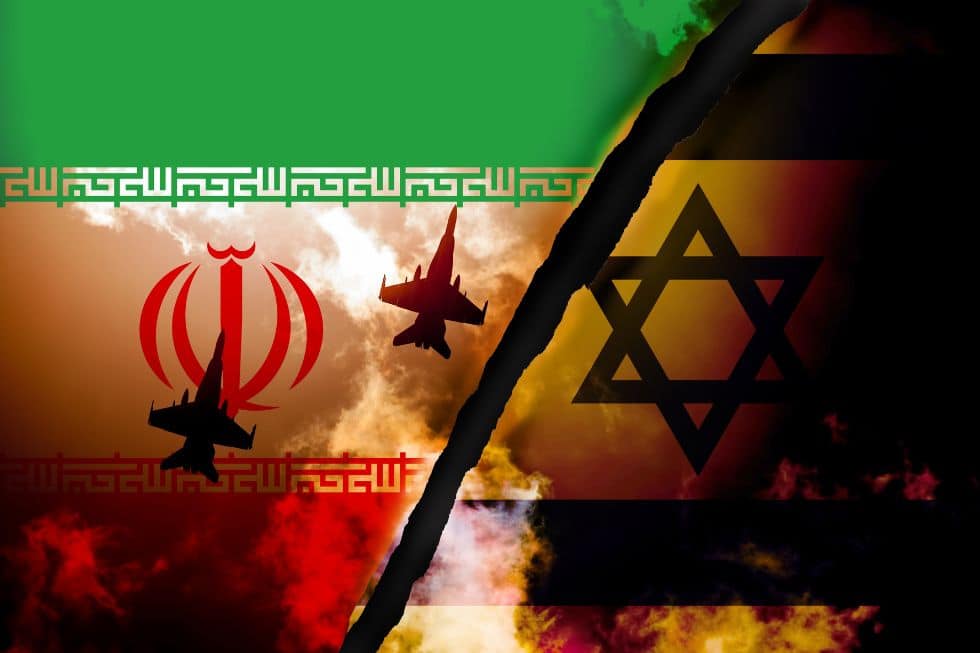Don’t hold your breath. President Donald J. Trump’s silencing of Iranian and Israeli guns is fragile at best. Speaking at a news conference on the sidelines of a NATO summit, Trump admitted as much. “Can it start again? I guess it can, maybe someday soon,” Trump said.
The fragility was built into the halt to the hostilities from the outset, starting with differences over whether the halt constituted a ceasefire. Iran rejects the notion of a ceasefire, even if it has agreed to halt the hostilities. Iran has insisted from day one of the Israeli assault that it would only stop retaliation for Israeli strikes once Israel halts its attacks.
A most fragile ceasefire
As far as Tehran is concerned, that is what Iran is doing in response to Trump and Israeli Prime Minister Binyamin Netanyahu’s labeling the halt of hostilities as a ceasefire. “As Iran has repeatedly made clear, Israel launched war on Iran, not the other way around. As of now, there is NO “agreement” on any ceasefire,” Iran’s Foreign Minister Abbas Araghchi said on X.
“However, provided that the Israeli regime stops its illegal aggression against the Iranian people…we have no intention to continue our response afterward,” Araghchi added. Even so, an Iranian missile fired at Israel minutes after the halt of hostilities went into effect, and Israel’s destruction of a radar in northern Iran in response demonstrated the halt’s fragility and provoked Trump’s ire.
Bowing to Trump’s demand that Israel restrain itself, Netanyahu called back Israeli fighter jets making their way to other Iranian targets.
Trump’s anger outburst indicated the degree to which the president can stop Israel from violating the ceasefire by striking at will whenever it feels that Iran is raising its head by, for example, attempting to rebuild its nuclear programme or replenish its missile arsenal.
Israel has consistently insisted that it has the right to strike whenever it feels that is warranted, as it does in Lebanon, despite the November 2024 ceasefire with Hezbollah, the Iran-backed Shiite Muslim militia, and Syria.
“For Israel, the risk is you have to sit and watch as some targets appear that you would have wanted to strike but now can’t,” said former senior director for Middle East affairs at the US National Security Council, Michael Singh.
“Maybe they have to watch as Iran tries to rebuild its nuclear programme. And they have to now put a lot of trust and hope in the United States to be able to deliver some kind of diplomatic agreement that preserves the gains that you have made militarily,” Singh added.
Singh put his finger on the pulse with Iran determined to rebuild its nuclear programme and likely still in possession of 410 kilograms of uranium enriched to 60% purity. The uranium, if further enriched, would be enough for nine nuclear warheads.
To be sure, the US and Israeli attacks have caused substantial damage to Iran’s nuclear infrastructure, despite questions about the degree of damage and the whereabouts of the highly enriched uranium. The uranium, if further enriched, would be enough for nine nuclear warheads.
Also, unclear is to what degree the US and Israeli strikes have impeded Iran’s ability to enrich, leaving aside whether Iran would want to further enrich the 410 kilograms. Iran has consistently denied wanting to have nuclear weapons. An initial US Defence Intelligence Agency assessment, denounced by the White House as “flat-out wrong,” concluded that the US strikes at three Iranian nuclear facilities did not destroy core components of the country’s nuclear program and likely only set it back by months.
Iran is down but not out
Even so, Esmail Baghaie, the Iranian foreign ministry spokesman. conceded that the US and Israeli strikes had “badly damaged the country’s nuclear programme. “That’s for sure,” Baghaie said without going into detail. Meanwhile, a growing body of Iranian voices suggests that the strikes, coupled with the near-collapse of Iran’s forward defence strategy based on non-state allies in Lebanon and Palestine and former President Bashar al-Assad’s Syria, make nuclear weapons Iran’s best option to reestablish deterrence.
Iran’s potential withdrawal from the Non-Proliferation Treaty (NPT) could embolden those who advocate for developing nuclear weapons.
Fuelling fears that Iran may opt for development of nuclear weapons, Iran’s parliament approved a bill to suspend cooperation with the International Atomic Energy Agency (IAEA), the UN’s nuclear watchdog. The bill, which must be approved by Iran’s unelected Guardian Council to become law, stipulates that any future IAEA inspections of Iranian nuclear sites would need approval by the Supreme National Security Council.
The bill “talks about suspending, not putting an end to the cooperation,” Baghaei said. The spokesman said restoring cooperation would depend on IAEA recognition of Iran’s “inalienable rights” in accordance with the NPT, including the right to enrich uranium up to 3.67%, and that the “security and safety” of the country’s nuclear sites and scientific community is guaranteed.
In addition to the damage caused by the US and Israeli strikes against nuclear installations, Israel has said it killed 14 Iranian nuclear scientists during the 12-day war. There is bound to be resentment in Tehran for these killings. Further threatening the sustainability of the halt of hostilities is the fact that Iran’s Axis of Resistance may be down but is not out.
A senior political official of the Houthi militant group in Yemen said that they are not bound by the Israel and Iran halt of hostilities, asserting they would continue their attacks “until the aggression against Gaza stops and the siege is lifted.” The Houthis could provoke a breakdown of the ceasefire by targeting the US Navy and international shipping in Gulf waters.
In the same vein, it is hard to determine to what degree Israel may have diminished Iran’s ballistic missile arsenal and ability to replenish it. Nevertheless, Iranian missile barrages highlighted weaknesses in Israel’s air defences, causing significant damages when they evaded the multi-layered anti-missile system.
Similarly, Israel struck at Iranian multiple non-nuclear targets, including police, cyber police, Basij militia, state television, and Red Crescent Society headquarters, the entrance to Tehran’s notorious Evin Prison, a power grid in the northern part of the Iranian capital, and a natural gas processing facility and gas refinery in Bushehr Province.
The strikes demonstrated Israel’s ability to hit whatever it fancies, including targets that could significantly impact the Iranian rulers’ grip on power as well as the degree of its intelligence penetration of Iran. Iran this week executed three people on charges of spying for Israel after earlier executing another three. Iran allegedly has arrested 700 people on suspicion of collaborating with Israel. So far, there seems to be no threat to the Iranian regime’s grip on power though.
The Israeli principle of overwhelming force is unlikely to work
The strikes followed a long familiar Israeli pattern that operates on the principle that sledgehammers and overwhelming force will whip opponents into submission. It’s a pattern applied to the Palestinians for decades that has failed to produce results. So far, there is no indication that it has worked in Iran despite Messrs. Trump and Netanyahu’s veiled assertions that this approach has worked.
The halt of hostilities is likely to remain fragile, even if it leads to a resumption of US-Iranian negotiations, given that there is no indication that Iran will bow to Trump’s demand that Iran “unconditional(y) surrender” and give up its right to enrich uranium to 3.67%.
In The Hague, Trump said that US and Iranian officials would meet next week but, convinced that the US strikes had “obliterated” Iran’s nuclear program, downplayed the significance of a formal agreement with the Islamic Republic. In doing so, Trump appeared to signal that the US would be hardline in the talks
“We’re going to talk to them next week, with Iran. We may sign an agreement. I don’t know. To me, I don’t think it’s that necessary… I don’t care whether we have an agreement or not,” Trump said. The president insisted that the US would not allow Iran to rebuild its nuclear programme. “We won’t let that happen. Number one, militarily we won’t,” Trump said.
Trump’s dismissal fuelled fears that a resumption of Israeli Iranian hostilities may be inevitable. The threat of revived hostilities was compounded by the absence of any suggestion that Iran would agree to restrictions on its missile programme. Even, so Trump appeared to offer a carrot by indicating that he would not stop China from buying oil from Iran, saying Tehran needs the money “to put that country back into shape.” This small carrot might not be enough.
[The Turbulent World first published this piece.]
The views expressed in this article are the author’s own and do not necessarily reflect Fair Observer’s editorial policy.
Support Fair Observer
We rely on your support for our independence, diversity and quality.
For more than 10 years, Fair Observer has been free, fair and independent. No billionaire owns us, no advertisers control us. We are a reader-supported nonprofit. Unlike many other publications, we keep our content free for readers regardless of where they live or whether they can afford to pay. We have no paywalls and no ads.
In the post-truth era of fake news, echo chambers and filter bubbles, we publish a plurality of perspectives from around the world. Anyone can publish with us, but everyone goes through a rigorous editorial process. So, you get fact-checked, well-reasoned content instead of noise.
We publish 3,000+ voices from 90+ countries. We also conduct education and training programs
on subjects ranging from digital media and journalism to writing and critical thinking. This
doesn’t come cheap. Servers, editors, trainers and web developers cost
money.
Please consider supporting us on a regular basis as a recurring donor or a
sustaining member.
Will you support FO’s journalism?
We rely on your support for our independence, diversity and quality.









Comment